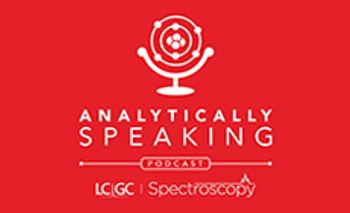Key Points
- The study used surface-enhanced Raman spectroscopy (SERS) with silver and gold nanoparticles to sensitively detect adenine, a key stress-induced metabolite, in five bacterial species under osmotic stress.
- Silver nanoparticles detected adenine in both stressed and non-stressed bacteria, while gold nanoparticles selectively detected adenine only under stress.
- The researchers highlighted the potential of this SERS-based approach for developing rapid, cost-effective, and portable point-of-care diagnostic devices, with future work aimed at optimizing nanoparticle formulations for improved reproducibility and broader applicability.
A recent study investigated how to use spectroscopy to advance bacterial diagnostics. This study, which was published in the peer-reviewed journal Sensors (1), was led by a team of scientists from the Institute of Scientific Instruments of the Czech Academy of Sciences using surface-enhanced Raman spectroscopy (SERS) to synthesize stable nanoparticles that can sensitively detect stress-induced biomarkers in bacteria (2). Their research is important as it adds to the growing research in developing new, rapid, and portable diagnostic tools.
What did the study investigate?
During their investigation, the researchers demonstrated how SERS can qualitatively detect bacterial metabolites released under physiological stress. The research focused on five selected bacterial species and their metabolic responses when exposed to osmotic stress, specifically using demineralized water as the stressor (1).
Using laboratory-synthesized spherical silver (Ag) and gold (Au) nanoparticles, the scientists employed SERS to track changes in spectral patterns, paying particular attention to the release of adenine, which is a purine-based metabolite and recognized stress biomarker. The reason why SERS was needed here was because Raman spectroscopy did not have the sensitivity that was required to detect low-concentration biomarkers (1).
Using nanoparticles was important to the study because it was a cost-effective alternative to other methods. As a result, the researchers showed that this aided the potential of the applicability of their technique. Not only did using nanoparticles contribute to making the method scientifically robust, but also potentially viable for real-world clinical and point-of-care applications (1).
The study also demonstrated that the characteristic Raman signal of adenine appeared prominently at a peak around 730 cm⁻¹ in both the bacterial suspensions and the surrounding medium, indicating active metabolite release (1). This signal was not detectable using conventional Raman spectroscopy, which emphasizes the importance of using SERS and taking advantage of its enhanced sensitivity (1).
Another key finding from this study was the behavior of the silver and gold nanoparticles. During adenine detection, the silver nanoparticles detected trace levels of adenine under both stress and non-stress conditions, whereas the gold nanoparticles exhibited selective detection primarily under stress conditions (1). This distinction is important because it could prove crucial for future applications aiming to differentiate between stressed and non-stressed bacterial populations.
The differential behavior of Ag-NPs and Au-NPs opens up a path toward more nuanced diagnostics. Gold nanoparticles may offer an advantage in distinguishing actual stress responses, reducing the risk of false positives in clinical analyses (1).
The researchers emphasized the potential of this technology to serve as the basis for developing portable, point-of-care (POC) diagnostic devices. Such tools could revolutionize bacterial identification and accelerate antibiotic susceptibility testing, which is currently a critical need in the face of growing antimicrobial resistance (1,3).
By offering rapid and label-free detection of stress-induced metabolites like adenine, SERS combined with nanoparticle substrates could enable healthcare providers to diagnose infections more accurately and swiftly (1).
What are the next steps in this work?
Based on the results of this study, the research team discusses that future research should focus on optimizing nanoparticle formulations and SERS substrates. Doing so, they argue, will help improve reproducibility and selectivity (1). Future studies are also necessary to better understand the nanoparticle-biomolecule interactions and to confirm the broader applicability of these findings across different bacterial species and stressors (1).
The main goal is to build user-friendly diagnostic platforms that can be deployed in both hospital and field settings. This study is a step in that direction, showcasing how fundamental research in spectroscopy and nanotechnology can translate into real-world healthcare benefits (1). With continued refinement, the technology could play a pivotal role in transforming how bacterial infections are detected, treated, and managed globally.
References
- Ghazalova, M.; Modlitbova, P.; Samek, O.; et al. Surface-Enhanced Raman Spectroscopy for Adenine Detection in Five Selected Bacterial Strains Under Stress Conditions. Sensors 2025, 25 (15), 4629. DOI: 10.3390/s25154629
- Takallu, S.; Aiyelabegan, H. T.; Zomorodi, A. R.; et al. Nanotechnology Improves the Detection of Bacteria: Recent Advances and Future Perspectives. Heliyon 2024, 10 (11), e32020. DOI: 10.1016/j.heliyon.2024.e32020.
- Kerremans, J. J.; Verboom, P.; Stijnen, T.; et a. Rapid Identification and Antimicrobial Susceptibility Testing Reduce Antibiotic Use and Accelerate Pathogen-directed Antibiotic Use. J. Antimicrob. Chemo. 2007, 61 (2), 428–435. DOI: 10.1093/jac/dkm497





